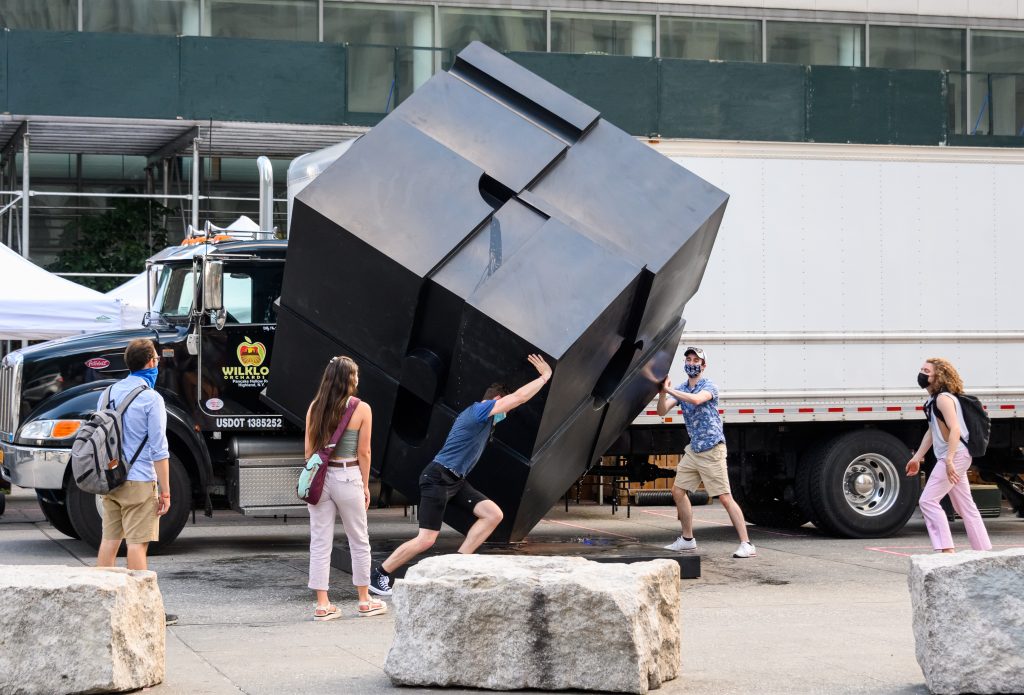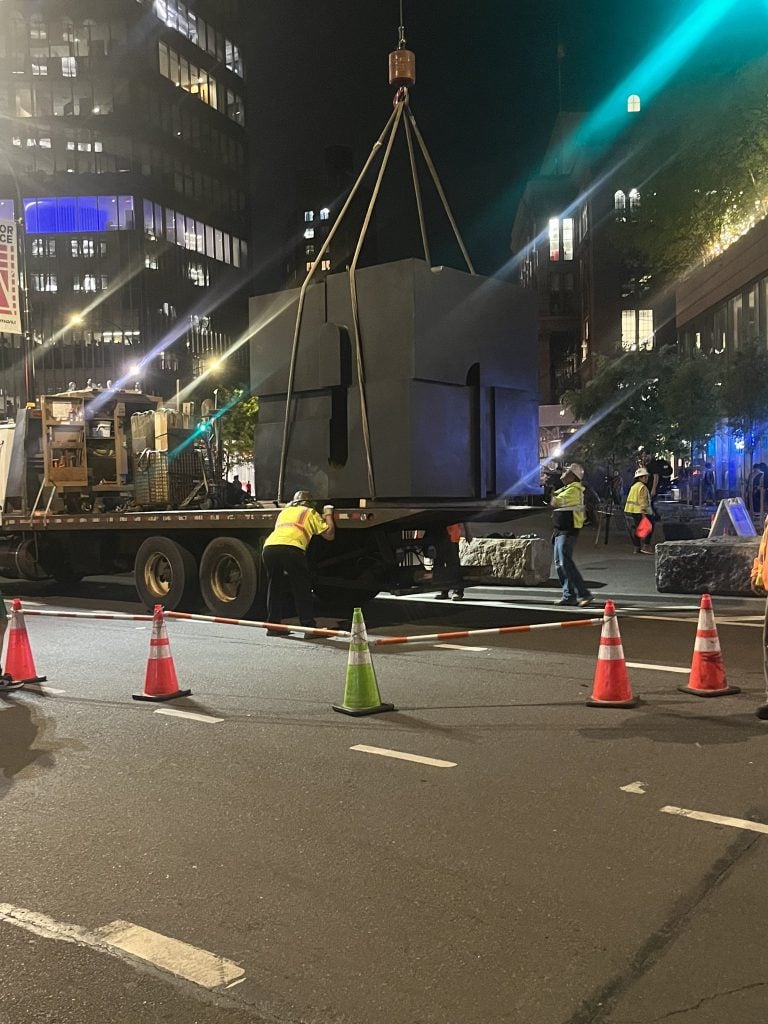Art World
New York’s Beloved Astor Place Cube Has Been Removed for Repairs That Will Restore Its Famous Spin
The Cube's spinning mechanism broke in 2021.

The Cube's spinning mechanism broke in 2021.

Sarah Cascone

For the second time in a decade, authorities have removed the Astor Place Cube, one of New York’s most beloved public artworks, this time in order to carry out much-needed repairs. The eight-foot-tall Bernard “Tony” Rosenthal sculpture officially titled Alamo is expected to return in August.
A fixture of the East Village since its installation 1967, the Astor Place Cube has fascinated college students and tourists alike with its ability to spin on its axis, all 1,800 pounds of Cor-Ten steel impressively balanced on one corner. But since 2021, the structure’s spinning mechanism has been broken, having separated from the base.
Now, the Department of Transportation, which is responsible for its maintenance, will return the Cube to its former spinning glory, with repairs funded by the estate of the artist, who died in 2009. Rosenthal actually intended to lock the Cube to one fixed position once it was put in place, but the happy accident of its rotating ability proved key to its enduring popularity.
“Generations of New Yorkers have taken the Cube for a spin, and we’re thrilled that the DOT and Tony Rosenthal’s estate have reached an agreement to refurbish the iconic sculpture so it can keep spinning for generations to come,” Cultural Affairs Commissioner Laurie Cumbo said in a statement. “Public art is integral to the vibrancy of New York’s public spaces, and the restoration of the Cube ensures that its singular presence will continue to enliven and define this bustling corner of the city.”

Bernard “Tony” Rosenthal, Alamo (1967). The artwork known as the Astor Place Cube being removed for restoration. Photo courtesy of the New York City Department of Transportation.
When the DOT first learned that the cube was no longer spinning smoothly, it dispatched city engineers to investigate. What they found was the sculpture was actually starting to tip over, Leaning Tower of Pisa-style. In December 2021, the Village Sun reported, the DOT had to install a metal brace to hold it in place.
Repairs, which will cost an estimated $100,000, will be carried out by Versteeg Art Fabricator, a foundry in Connecticut. They will include straightening it and applying five coats of fresh paint.
“The cost wasn’t the issue. We want Tony’s legacy to live on,” Dave Petrie, the director of Rosenthal’s estate, told the New York Times. He had been “concerned about the state of disrepair” the artwork was in.
The sculpture was previously restored, also by Versteeg, in 2005. At the time, water had seeped into the cube, requiring workers to de-rust and unclog drainage holes.

Bernard “Tony” Rosenthal, Alamo (1967). The artwork known as the Astor Place Cube being removed for restoration. Photo courtesy of the New York City Department of Transportation.
The Cube was off view again from 2014 to 2016, during the $17.2 million Astor Place Reconstruction Project, which turned the area surrounding the Cube into a permanent pedestrian plaza. Another restoration, with a $180,000 price tag, was carried out at that time.
The sculpture was originally intended to be on view for just six months, as part of a the city’s first large-scale public art show, organized by the Department of Cultural Affairs. It was immediately embraced by the public, and the neighborhood successfully campaigned to keep it on permanent view. (Rosenthal had planned to give the work to his alma mater, the University of Michigan in Ann Arbor, but ultimately donated a second version of the piece to the school.)
“Rosenthal’s artistic vision in the 1960s has managed to capture the imagination and spirit of the whole East Village community for decades with an iconic sculpture that is best enjoyed when it is touched and spun with friends,” DOT Commissioner Ydanis Rodriguez said in a statement.
More Trending Stories: